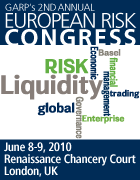- Everything is standard; the burden of proof is on the institution to prove otherwise. - I have to presume that markets are in fact in favor of central counter-parties, to help mitigate credit risk and operational risk (the system does take new concentration risk). Meanwhile, ensuring that “non-standard” contracts are at least as stringently regulated as standard ones should mitigate incentive to innovate around the regulations.
- Institutions must be asked to decompose their “products” into underlying “factors of risk exposure”.
All exposures, however complex, can be broken down into underlying Market Factors, Terms & Conditions determining payoffs, and Time (this is Derivatives 101).This way, we will get out of the confusing product jargon. A uniform market model for breaking down risk into components means that it can be communicated and aggregated easily across institutions, and across the market as a whole. - A College of Regulators -While the Federal Reserve seems ready to take on the driving regulatory role, there are alternatives with unique merits. A college of regulators could have the mandate to collect and examine inventories and exposures in the market at factor, instrument, product, and player levels, and set alerts to determine how much gross and net exposure warrants attention. This would be a “heat map” of risk levels fed by regular scenario analysis and stress-testing against liquidity, correlations, market risk factor, and macro-economic considerations.
- But empower one regulatory voice for the global dialogue -Our financial solutions seek to address issues nationally but the markets and risk are global. The US must appoint one regulator, to be its voice at the international table of regulators. A new systemic regulator is a redundancy. Having said that, the Fed (if it is the chosen one) needs some cultural transformation from the micro to the macro, and in resolving the conflict between monetary policy and supervision, and between regulation of a firm versus the market.
- Create additional sharp focus on Liquidity - Liquidity risk remains very little understood and the least developed of all Risk-types. At the height of a crisis, Liquidity risk creates binary outcomes…here today, gone tomorrow. The Regulatory College must develop good perspective for liquidity in markets as a whole.
- But above all, smart principle-based Regulation, please - Do recognize there are no guarantees. Smart regulation will not allow players to abdicate risk responsibility to the regulator and the politician. It will instead put the onus firmly on institutions to establish complete and transparent principles, practices, and policies. It is high time that Boards and CEOs, with their CROs, define and articulate their risk appetite (it doesn’t have to be all quantitative); and then prove they have the architecture to implement, support and manage actual risk exposure against appetite & tolerance.
Bottom-line, Regulators must
- Provide principles and incentives that each firm clearly articulates risk appetite and tolerance
- Demand disclosure across all stakeholders, including shareholder, investor, and regulator
- Create aggregate simple metrics for risk at the level of the system
- Require standards as to what firms do warehouse and trade outside of the standard systems
- Require strong independent internal risk management structures for reliable measurement, monitoring, reporting and management
- Provide disincentives to arbitrage out of standardization without curtailing ability to innovate and customize client solutions
It is not going to be easy. There is much rock and many hard places.






0 comments:
Post a Comment